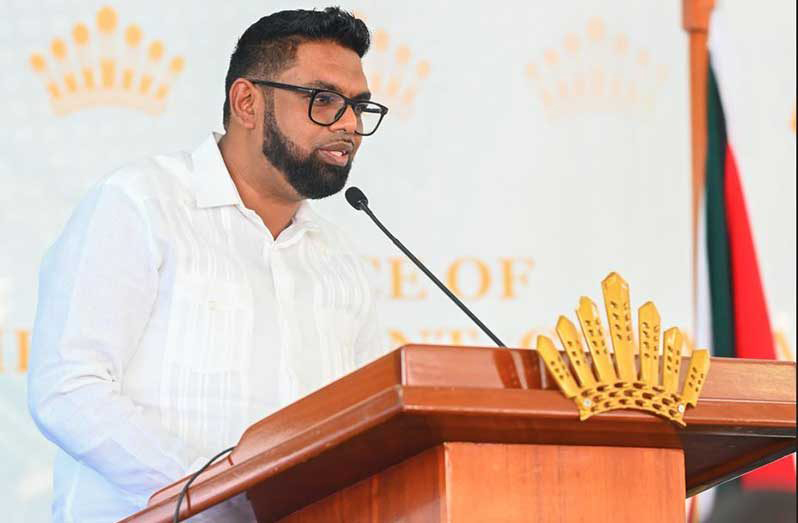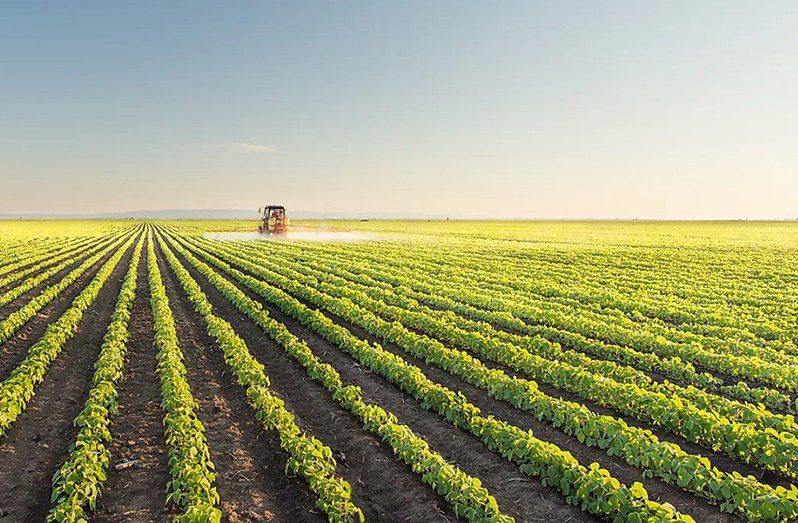THE development of the agriculture sector and sustainable food security have long been key objectives for Guyana’s current administration. At a press conference on Thursday last, President Mohamed Irfaan Ali shared some of the proactive and commendable advancements currently taking place in the sector and the role the nation’s people will play in it.
The Brackish Water Shrimp project is among the innovative ventures and is reportedly doing exceedingly well. Speaking about this project and others in the aquaculture sector, the President noted, “In 2023, production soared by 54 per cent compared to 2022. From 2021 to 2023, there was an increase of 755 per cent, from 112,000 kg to almost a million kg.”
He further added, “The target is to achieve a production of 1.5 million kg by 2025. The prawns project is going exceedingly well, with 10 ponds under construction. The first pond is already stocked. With three crop cycles annually for 10 ponds, we can achieve a production of 360 tons of shrimp valued at 1.4 billion Guyana dollars.”
The President emphasised that these endeavours aim to prove the country’s model to the larger banking sector. He added that this is just the first step in developing the sector to provide young Guyanese with better opportunities by supplying them with more than 100 acres of land, with 35 per cent being allocated to women.

“We are going to work with them, with technical support from Indonesia, our support, extension support from the Ministry of Agriculture, and financing from the bank.”
He further added, “We are going to deploy that land as assets to the bank and develop large-scale production in that area owned by young people of Guyana. Building opportunities in our food production and food security plan and creating business opportunity and growing more young people to middle and upper level of the economic system.”
Low and middle-income families are also a major focus for the sector. The President gave a detailed outline of a new project said to be developed with low-income individuals and families in mind.
“We are launching a new product for low-income families, a homestead approach. We are looking to develop 50 by 100 plots on the highway, which would be as productive as a five-acre plot. We want to give low-income houses at the same price but add a number of coconut trees or breadfruit in the front yard, linking this to future agro-processing facilities.”
He added, “At the back of the yard, we will have a shade house measuring 20 by 40. We also plan to install solar systems to support low electricity costs for the homes. Economically, this shade house would comfortably carry the load for the home and give that family income. We are targeting 500 families in the first instance, with a project cost of around six billion dollars. We are looking to get the local private sector and the banking sector involved in this so we can create wealth in every level of our society.”
In stating major achievements for the year, the Presidnet added that coconut production has increased by 50 per cent; by 2025, the government aims to be self-sufficient in black-eyed peas and red beans. Approximately 450 hectares have been cultivated with an investment of close to US$3 million. The corn and soy project is also progressing rapidly, growing from 125 acres in 2021 to more than 10,000 acres. The sector is on track to cultivate 25,000 acres of corn and soy twice annually.
Addressing feed production and prices, the President explained, “Now we will be able to manufacture feed here, reducing costs for farmers. Similarly, for aquaculture, with the investments we are making, by the second quarter of next year, we should see the cost of feed for the aquaculture sector reducing by 50 per cent. All of this will enhance our competitiveness and create great opportunities.”



.jpg)








